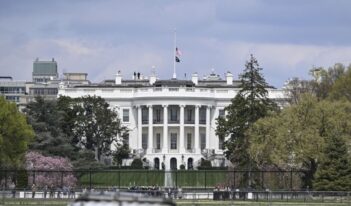
Using the VSL to measure benefits promotes the interests of individuals who are affected by regulation.
James Broughel’s essay, “Rethinking the Value of a Statistical Life,” does not rethink the valuation of mortality risks in any meaningful way.
The current practice for valuing mortality risks is to monetize these effects using empirical estimates of the value of a statistical life (VSL), which is society’s willingness to pay for the mortality risk reduction. In 1982, I introduced this approach for valuing mortality risk benefits after being asked to resolve the debate between the Office of Management and Budget and the Occupational Safety and Health Administration over the proposed hazard communication regulation.
Use of the VSL to monetize the benefits of mortality risk reductions has been the mainstream economic technique for valuing mortality risks for several decades. It supplanted previous measures that monetized mortality risks based on lost earnings and medical costs, or what agencies referred to at the time as the “cost of death.” That earlier approach substantially underestimated how much that people are willing to pay to reduce risks and was not explicitly linked to that concept. Although it is not clear whether or how Broughel wishes to value mortality reduction benefits, he argues that current practices overestimate these benefits.
A principal source of his concern is what he regards as wasteful mortality-reducing expenditures on behalf of older citizens. He laments that people might be willing to pay substantial amounts for end-of-life treatments that are relatively ineffective. His reservations about such expenditures are general, as they encompass private expenditures for which the main opportunity cost is that these expenditures reduce the person’s bequest. Overriding these private choices is no more warranted than interfering with other consumption expenditures that Broughel might consider to be frivolous or which would certainly not enhance economic productivity. Placing limits on the freedom of choice—that is, regulating—should be restricted to situations where there are demonstrable, consequential negative externalities directly generated by individuals’ own consumption decisions.
Broughel is also concerned that, by using a uniform value for the VSL, the U.S. Environmental Protection Agency (EPA) values short life extensions by $10 million. Such an average VSL figure is consistent with the amount of compensation that workers receive for each expected workplace fatality. For policies that affect the citizenry broadly, use of an average, population-based VSL yields the same benefit value as would the use of heterogenous VSL estimates, weighted by their population distribution.
But what if a disproportionate share of the benefits is reaped by older citizens? The main policy in which EPA grappled with that issue was the proposed Clear Skies initiative, which was estimated to have effects at both ends of the age distribution. As I have discussed in my book, Pricing Lives: Guideposts for a Safer Society, using an appropriate age-varying VSL does not greatly alter the estimated benefits for this policy. The VSL declines with age, but it does not plummet. The VSL for those aged 62 is above the VSL for those aged 20, in part because of differences in those individuals’ financial resources, which in turn affects their valuation of risk.
Government agencies are also able to handle sensibly the resource-allocation decisions raised by policies with very small impacts on life expectancy, such as end-of-life situations. Instead of using the VSL to value small improvements in life expectancy, one can use the value of a statistical life year (VSLY), which is a measure that reflects a shorter duration of life extension. The possibility that government policies only have a small effect on life expectancy is particularly relevant to the efforts by the U.S. Food and Drug Administration (FDA). In a 2016 regulatory analysis, FDA used a $369,000 VSLY figure to value each life year that would be extended. In its official guidance, FDA has now raised the VSLY to $490,000 in 2014 dollars.
The VSL remains the mainstream economic approach to valuing mortality reduction benefits because it is tied to the underlying principle for benefit assessment, which is society’s willingness to pay for the benefit. Use of the VSL to monetize the mortality reduction effects of government policies enables policies to be guided by the preferences of the citizenry who are affected.
This essay responds to “Rethinking the Value of a Statistical Life,” written by James Broughel.
This essay is part of a seven-part series, entitled The Value of the Value of a Statistical Life.




